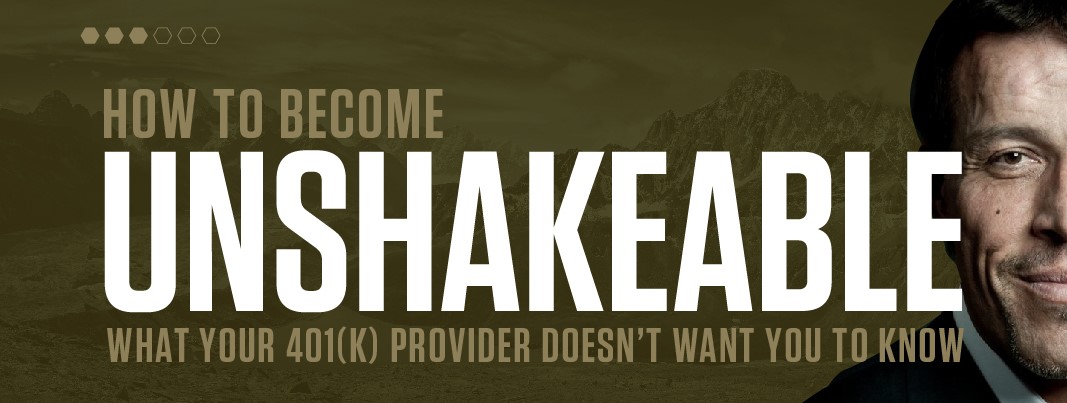Born in 1984, the 401(k) plan gave regular Americans a way to make tax-deductible contributions to a retirement account directly from their paychecks.
[REITs]
Q2 hedge fund letters, conference, scoops etc
Today, it’s the single most important investment vehicle for most people in the country:
- 90 million Americans participate in 401(k)s
- $6 trillion in assets are invested in 401(k)s
- 51% of employers match a portion of employee 401(k) contributions
The only problem? With trillions of dollars at stake, financial firms have scrambled to get their hands in as many 401(k) cookie jars as possible.
And today, the vast majority of plans are characterized by huge commissions, expensively managed funds, and layer upon layer of additional – and often hidden – charges.
Flying Below the Radar
Today’s infographic is from Tony Robbins, and it uses data and talking points from his #1 Best Selling book Unshakeable: Your Financial Freedom Playbook, which is now available on paperback.
It reveals that although 401(k) plans can be used as crucial vehicles for tax-free retirement saving, 92% of investors admit that they do not have any clue about the fees associated with their plan.
Further, 71% of people enrolled in 401(k)s incorrectly think that there are no fees at all.
The Retirement Savings Drain
Many people are unaware of the types of fees that get loaded onto 401(k) plans – and here are just some of them that get passed to the investor:
- Investment expenses
- Communication expenses
- Bookkeeping expenses
- Administrative expenses
- Trustee expenses
- Legal expenses
- Transactional expenses
- Stewardship expenses
How much does this all end up costing?
According to a thinktank report from Robert Hiltonsmith, the additional 401(k) fees can cut down the size of your retirement nest egg by an average of 30% for an average worker earning $30,000 per year (and saving 5%), this ends up being $154,794 over his or her lifetime.
For someone making $90,000 per year, it works out to a whopping $277,000 in 401(k) fees.
Paying to Play
Hidden fees are bad, but this next practice is potentially even worse.
It turns out that most big-name 401(k) providers accept payments from the mutual funds they offer on their plans, as a part of revenue sharing agreements. In other words, many of the funds you get to choose from are not there based on merit – instead, they were the ones that coughed up the money to be there.
Not surprisingly, these tend to be actively managed, expensive funds – some of which even charge a “front-end load” fee of 3% to even buy into.
Why are there so few options to choose from?
- 93% of 401(k) plans carry under $5 million in total plan assets
- These are the small and medium-sized companies that make up most of the economy
- However, they also have the lowest buying power to demand better options for their employees
As a result, most providers offer limited options to their smaller, less lucrative accounts – and the low fee options that are offered are sometimes marked up big time.
For example, one major insurance company offers an S&P 500 index fund for 1.68% annually when the actual cost is 0.05%. That’s a 3,260% markup!
Small Fees Make a Big Difference
How much do these seemingly tiny percentages really hurt savers? More than you think.
Take two people saving for retirement generating the same return – one is charged 1% in fees, and one is charged 2%.
The 1% difference in fees may not sound like much, but through the power of compound interest, it works out to 10 years of extra retirement money!
What to Do About It?
The problems here are systemic, and not any one company is to be blamed. If you want to take action, here’s what you can do:
Examine: Take a look at your plan’s fee disclosures and the expense ratios of mutual funds you’re invested in. If expense ratios are above 1%, you are likely paying too much.
Compare: Look at available fund options and switch to lower fee options if they offer similar levels of performance.
Lobby: If your 401(k) is getting battered by fees, tell your employer. Employers not only have a fiduciary duty to benchmark their 401(k)s, but also to seek the best option for employees.
The journey towards financial freedom is tough enough as it is – and while a 401(k) is a wonderful tool to help you get there, it needs to be used correctly!
Article by Visual Capitalist


